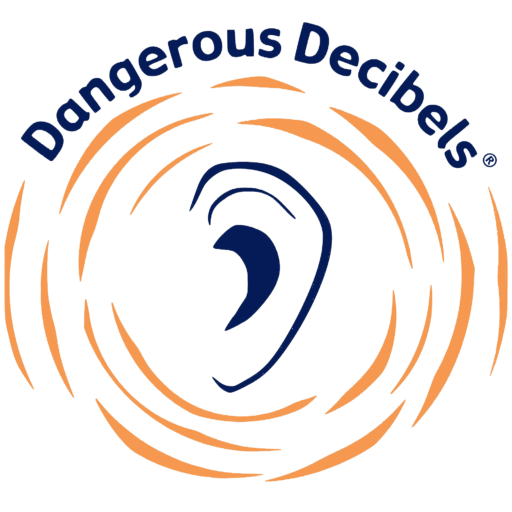Connecting with Your Audience: 4. Are You Ready?
Creating Your Practice Video


Now it is time to make your own video! To prepare, please do the following:
- Review the Dangerous Decibels Program Guide closely, make your own notes or reminders on the summary sheet or index cards if this is helpful to you. We’ve given you some extra index cards printed on larger sheets of paper to make notes on too.
- It may also be a good idea to watch the classroom video or video segments again as you prepare.
- Find a small group of elementary students, family members or others to be your “audience”. Having at least 4-5 people in your audience works best. However, you can practice with as few as 3 participants. Please make sure the participants are aware that they will be videotaped and that they give their permission to be videotaped by participating in your practice session. It might be a good idea to have them all agree to this at the beginning of your video.
- Arrange for a room with a table and some chairs for your participants. Another option is to have everyone sit around a large table and
- Setup your Dangerous Decibels Program materials and resources on a table. You should have everything you need in your Dangerous Decibels Kit except for a computer and projector. Make sure all your materials are laid out in order and working before you start your video.
- For the “Whats That Sound?” computer activity, you can use a personal computer with good sound, and there is no need to project the activity unless you have easy access to projection equipment.
- Set up your video camera/smartphone to videotape you giving the program. The camera view should be on you the instructor and with a wide enough angle to see most of the participants in the activities when you bring them up front. Make sure you have a power supply to your video equipment, so it doesn’t lose battery power during the recording.
- Make a video of you delivering the entire Dangerous Decibels Program. **Remember to speak loudly and clearly, so you can be heard on the video.**
NOTE: It may be useful to make a sample video first to make sure the picture and sound quality are good before practicing and videotaping the entire program.
We encourage you to watch the classroom video again before practicing.
